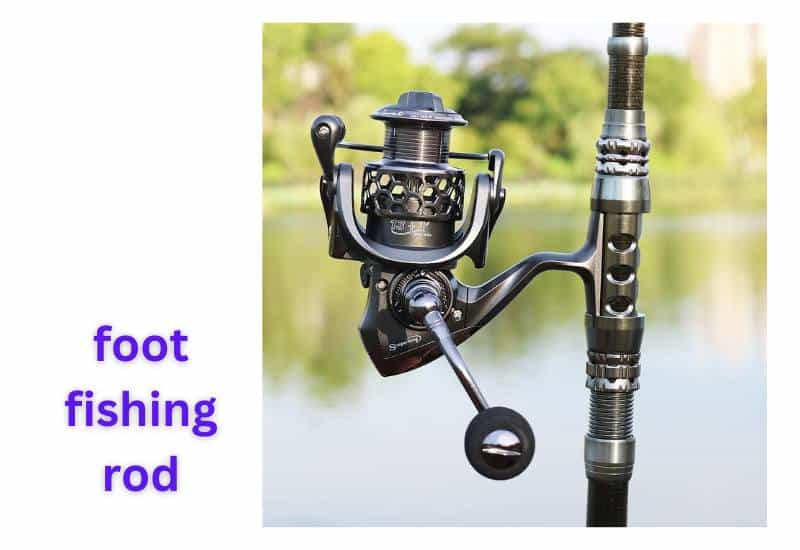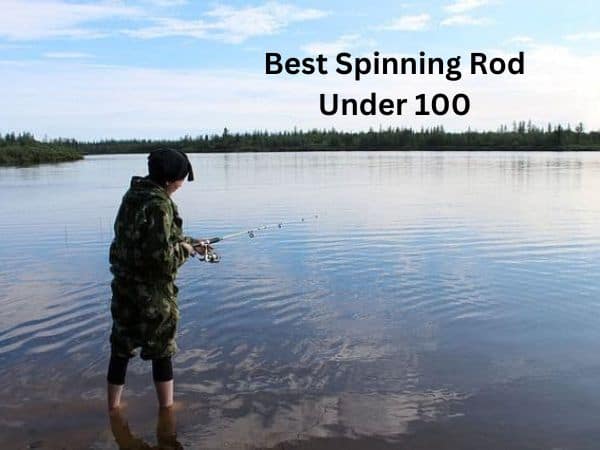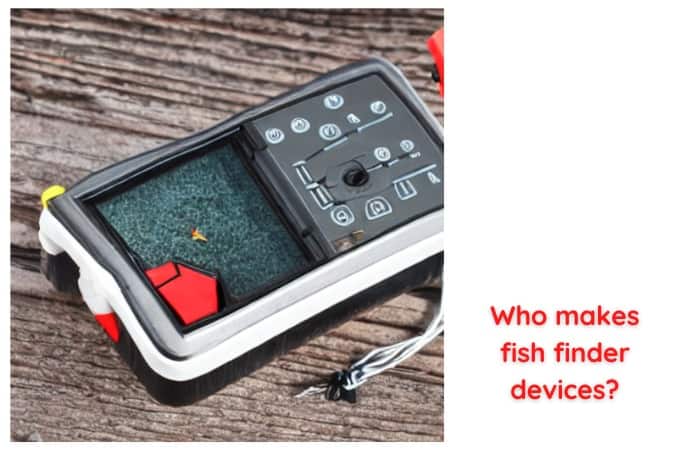The best foot fishing rod for beginners
Just getting into foot fishing? You might be wondering what is the best foot fishing rod for beginners. In this blog post, we will discuss the different types of rods available and which one would be best suited for a beginner. So, whether you are just starting out or you are looking to upgrade your current equipment, read on for some helpful tips!
fishing rod vs fishing pole:
A fishing rod is a more specialized tool that is often longer and has a thinner diameter than a fishing pole. It is designed to cast a bait or lure farther distances, and typically has more sensitive tips than poles in order to feel the lightest nibbles from fish.
Fishing poles are more versatile tools that can be used for both casting and trolling lures, as well as live bait. They are also generally shorter and have thicker diameters than rods, making them more sturdy for reeling in larger fish.
15 ft fishing rod:
A 15-foot fishing rod is great for larger fish that like to stay in deeper waters. Species that can be hunted with a 15-foot fishing rod include salmon, bass, catfish, and walleye.
A 15-foot fishing rod is a good choice for anglers who want to cast long distances. A longer rod gives you more leverage and makes it easier to launch your bait or lure beyond the range of shorter rods. Additionally, a longer rod provides more control when fighting fish, which is especially important when using heavier tackle.
18-foot fishing rod:
The 18-foot fishing rod is perfect for larger fish, like bass and catfish. The length of the rod gives you more leverage when fighting a larger fish, and the thicker diameter of the rod helps to provide more stability when casting.
The best way to use an 18-foot fishing rod is to find an open spot on the river or lake where you can cast your line without hitting any obstacles. Make sure to position yourself so that the fish will be swimming towards you, and wait for a bite!
12-foot fishing rod:
A 12-foot fishing rod is a good choice for anglers who want to cast large lures or attract fish from a distance. The longer length also gives anglers more control over their casts and enables them to reach fish in deep water.
A 12-foot fishing rod can be used to catch a variety of different types of fish. Some smaller fish, such as sunfish or perch, can be caught with a simple hook and line. Larger fish, such as bass or trout, may require a bit more gear, such as bait and tackle. With the right setup and some patience, just about any type of fish can be caught with a 12-foot fishing rod.
shimano telescopic fishing rod 12 foot:
Shimano telescopic fishing rod is 12 feet because the design of the Fishing Rod is to be retracted for easier transport and storage. The maximum extension of the Fishing Rod is 12 feet. When fully retracted, it measures only 43 inches in length.
Shimano telescopic fishing rod 12 foot is made of a durable carbon composite blank that makes it strong yet lightweight. Plus, this rod has a comfortable EVA foregrip and rear grip that provide extra control and reduced fatigue while casting.
The guides are also SiC to provide superior strength and durability, while the Shimano Dynaflow reel seat ensures a solid connection between the rod and reel. Finally, the natural cork handle provides a firm, comfortable grip even when wet.
10-foot telescopic fishing rod:
A 10-foot telescopic fishing rod is perfect for fishing in smaller streams and creeks. Because the rod telescopes down to a compact size, it’s easy to take with you wherever you go. And since it extends to 10 feet in length, it provides plenty of reach for catching those larger fish in deeper water.
8-foot saltwater fishing rod:
There are a few reasons why someone might choose an 8-foot saltwater fishing rod. For one, it provides a longer casting distance for reaching targets further out in the water. Additionally, an 8-foot rod also has more power and strength than a shorter rod, making it ideal for landing larger fish. Finally, this type of fishing rod is great for surf casting as well as deep-sea fishing.
best 6-foot fishing rod for closed-face reel:
there are so many different types of fishing rods on the market. However, a good starting point would be to look for a 6-foot rod that is made from graphite or fiberglass since these materials are durable and lightweight. Additionally, you’ll want to find a rod that is designed for use with a closed-face reel. This will ensure that the rod is properly matched with the reel and can handle the stresses associated with casting.
what size rod for freshwater fishing:
Freshwater fishing rods come in a variety of sizes, but the most common lengths are 6.5 to 7.5 feet long. This is because they provide the right balance between casting distance and fighting power for the average-sized fish found in freshwater streams, ponds, and lakes.
There are also shorter rods (4 to 5 feet) designed for panfish and smaller trout, as well as longer rods (8 to 9 feet) designed for catching larger fish in deep water. The choice of rod size will depend on the type of fish you’re targeting, how big they are, and what kind of terrain you’ll be fishing in.
fishing rod eyelet repair:
A fishing rod eyelet is a small metal ring, typically brass, that is fitted into the end of a fishing rod. The eyelet is used to attach the line and various accessories to the fishing rod.
If your fishing rod eyelet becomes damaged or corroded, you can repair it by using a few simple tools and supplies. First, use a sharp knife or scissors to cut away any damaged or corroded material around the edge of the eyelet. Be careful not to cut into the metal of the eyelet itself.
Next, use a wire brush or steel wool to remove any remaining corrosion or debris from around the edge of the hole. Finally, apply a coat of strong epoxy adhesive to the edge of the hole and allow it to dry before re-attaching the line or accessories.
the best rod for lake shore fishing:
A medium-action rod is ideal for fishing from a dock or boat. It should be long enough to allow you to make casts into deeper water, but not so long that it’s cumbersome to handle. Look for a rod with a rating of 6-12 pounds, which will be suitable for casting light lures or bait around structures in the lake.
how to measure fishing rod tip size:
When measuring the size of a fishing rod tip, you’ll need to use a ruler or tape measure to get an accurate measurement. Start by placing the ruler or tape measure at the end of the fishing rod and extending it out towards the tip of the rod. Make sure to note whether you are measuring in inches or centimeters, then record the measurement.
foot rod needs for peer fishing:
It depends on the size of the fish and the size of your net. Usually, one rod is enough to get a good-sized fish, but if you’re trying to catch smaller fish then you’ll need more rods. Make sure to use a sturdy net with a deep pocket so that you can scoop up the fish easily!
best foot fishing rod for beginners:
A good foot fishing rod for beginners is a telescoping rod that is easy to use and has a large enough casting range. Look for a rod that is at least nine feet long, and make sure it collapses down to a manageable size for transport.
When choosing a reel, go with one that has a braking system to help reduce the chances of backlash. And finally, be sure to get some practice casting before hitting the water!
Frequently Asked Questions (Faqs):
Answer:
A 6-foot fishing rod is good for catching fish that are close to the surface of the water. It can also be used for trolling, which is a method of fishing where a lure is towed behind a boat.
Answer:
It really depends on the airline and even the type of aircraft. Some airlines do not allow any kind of fishing gear, while others may only prohibit rods with hooks still attached. It’s always a good idea to call the airline before you fly to make sure you’re aware of their specific policies and restrictions.
Answer:
If the fishing rod is not broken, but just needs some cleaning, then all you may need is some fresh water and a brush. Gently clean the entire rod with the brush, making sure to get in between the cracks and crevices. Once it’s clean, rinse off the rod with freshwater and let it air dry.
If your fishing rod is broken, you will need to take it to a professional to have it fixed. They will be able to replace any pieces that are missing or damaged and get your fishing rod back up and running like new.
Answer:
Yes, fishing rod length matters. The longer the rod, the greater the distance you can cast your line. This is especially important when fishing in open water where there is a lot of space between you and your target. A long rod will also help you reel in fish faster once they are hooked.
Answer:
It depends on the type of kayak you have. If you have a sit-in kayak, then the best place to mount a fishing rod holder is on the side of the kayak. If you have a sit-on-top kayak, then the best place to mount a fishing rod holder is on the front or rear of the kayak.
Some people also mount fishing rod holders on top of their kayaks. This is generally not recommended because it can make it more difficult to get back into the kayak if you fall out, and it can also make the kayak more difficult to paddle.
Answer:
One possibility is that you may not be applying enough pressure to the reel. Another possibility is that there may be something caught in the reel that’s preventing it from spinning properly. Finally, it’s also possible that there’s something wrong with the reel itself and it needs to be repaired or replaced.
Answer:
The amount of bend in a fishing rod is affected by the stiffness of the rod, the weight of the bait or lure, and how far down you have inserted the bait or lure. The further down you insert the bait or lure, the more bend you will get in your fishing rod.
Answer:
A five-foot fishing rod is a good choice for small streams and ponds because it is easier to maneuver than a longer rod and it can cast smaller lures or bait further. It is also more portable so you can carry it with you when you go fishing.

final words:
Whether you’re a beginner or an experienced fisherman, it’s important to have the right equipment for the job. In this post, we’ve outlined what we believe to be the best foot fishing rod for beginners. We hope that our advice will help you choose the perfect rod for your needs and enable you to catch more fish! Have you tried out any of the rods we recommended? Let us know in the comments how they worked out for you.




